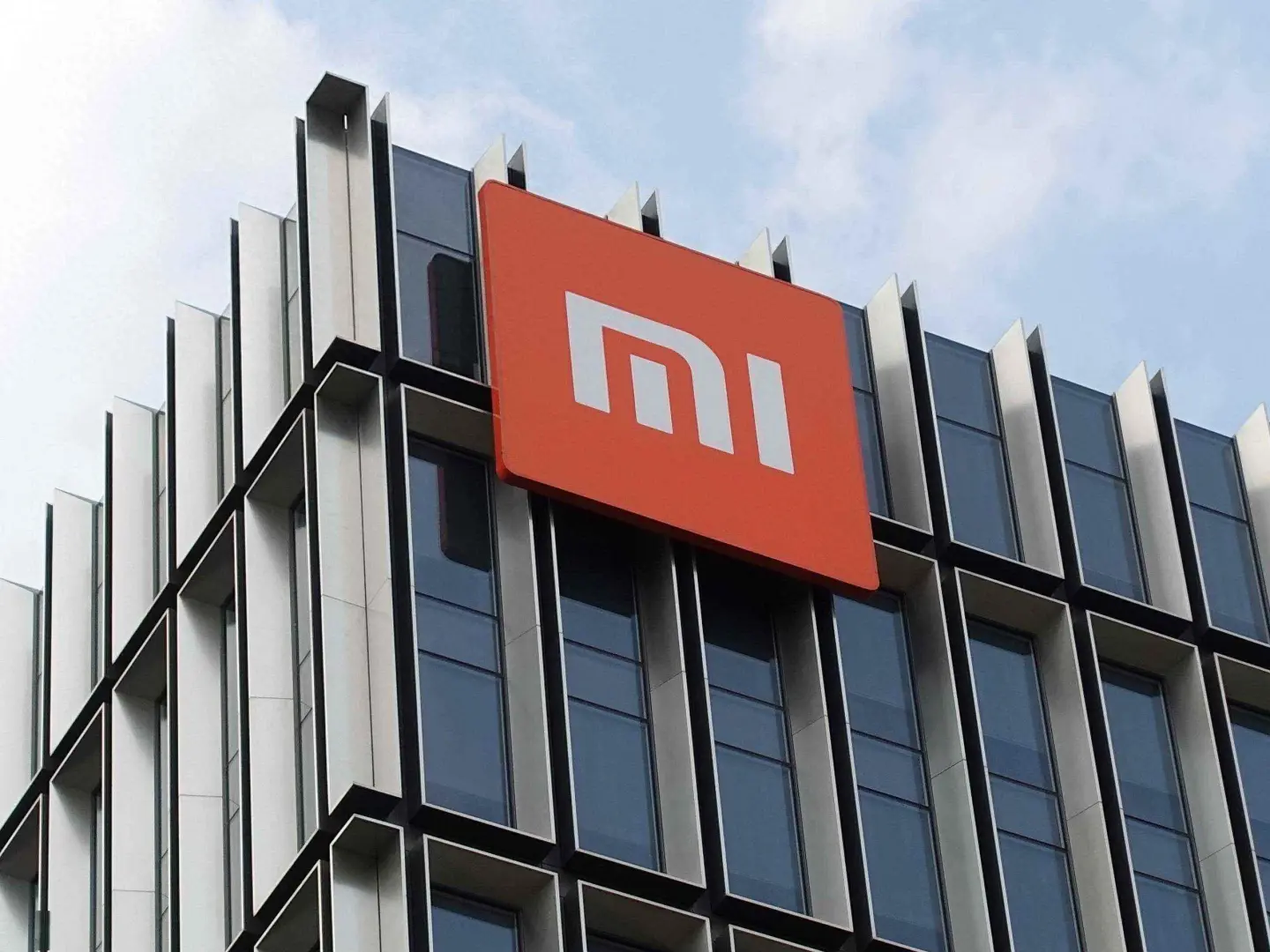In a move set to reverberate across the global technology landscape, Chinese consumer electronics titan Xiaomi has announced an unprecedented commitment: a staggering 200 billion yuan (approximately US$28 billion) will be poured into research and development (R&D) between 2026 and 2030. This monumental investment, revealed by founder and CEO Lei Jun during a highly anticipated keynote address tonight, signals Xiaomi’s intensified ambition to challenge established giants like Apple and Samsung, cement its position as a diversified tech powerhouse, and redefine the future of intelligent living.
The substantial R&D allocation will strategically target crucial emerging sectors, including cutting-edge Artificial Intelligence (AI), advanced smart manufacturing, and the rapidly evolving Electric Vehicle (EV) market. This isn’t merely about incremental improvements; it’s a profound strategic pivot aimed at securing Xiaomi’s long-term competitive edge in an increasingly fierce global arena, where technological innovation is the ultimate differentiator.
Lei Jun underscored the imperative nature of this investment, stating, “Robust R&D is crucial for Xiaomi’s future growth and for maintaining its market position. We are not just building products; we are building the future.” This declaration encapsulates the company’s vision, moving beyond its well-known smartphone origins to encompass a vast ecosystem of interconnected devices and services.
The Innovation Engine: A Deep Dive into Xiaomi’s R&D Philosophy
Xiaomi’s planned $28 billion R&D investment is not an isolated event but a continuation of a deeply ingrained corporate philosophy centered on relentless innovation. The company has a well-documented history of heavy investment in research, with a remarkable 48% of its workforce already dedicated to R&D activities. This commitment has consistently translated into tangible technological advancements and a formidable intellectual property portfolio, underscoring R&D as a critical competitive survival strategy in the fast-paced tech industry.
A Legacy of Patent Power and Proprietary Chips
Xiaomi’s dedication to innovation is clearly demonstrated by its prolific patent filings. The company has, in previous periods, filed over 6,000 patents in a single year, showcasing a robust pipeline of new ideas and inventions. This aggressive patenting strategy is vital for protecting its proprietary technologies and securing a competitive advantage in a market rife with intellectual property disputes. One recent example includes a groundbreaking patent for a solid-state EV battery filed in June 2025, which promises to redefine energy storage technology.
A key indicator of a tech company’s long-term R&D prowess is its ability to develop its own core components. Xiaomi has made significant strides in this area, exemplified by the development of its proprietary chipsets, allowing for greater control over performance and integration within its ecosystem.
The Surge S1 chipset, introduced in early 2017, marked Xiaomi’s inaugural foray into in-house developed system-on-chips. Built on TSMC’s 28nm HPC+ process, this 64-bit octa-core ARM processor integrated four Cortex-A53 cores clocked at up to 2.2 GHz and another four at 1.4 GHz, alongside a Mali-T860 MP4 graphics processing unit. While it was a foundational step into a highly competitive segment dominated by industry stalwarts like Qualcomm and MediaTek, it unequivocally demonstrated Xiaomi’s commitment to vertical integration and reducing reliance on external suppliers for critical hardware.
More recently, Xiaomi officially unveiled the Xiaomi XRING O1 3nm SoC and the Xiaomi XRING T1 4G smartwatch SoC in May 2025, marking a pivotal moment in its chip development. The XRING O1, built on a cutting-edge second-generation 3nm process with a staggering 19 billion transistors, features a formidable 10-core CPU and a 16-core Immortalis-G925 GPU, promising flagship performance with industry-leading power efficiency. It also integrates Xiaomi’s fourth-generation ISP (Image Signal Processor) and a potent 6-core NPU (Neural Processing Unit) offering 44 TOPS (Tera Operations Per Second) for advanced AI processing. These advancements in chip design are critical, as they allow Xiaomi to tailor hardware performance precisely to its software and ecosystem needs, offering unique user experiences that are harder for competitors to replicate. The XRING T1, Xiaomi’s first 4G smartwatch chip with a self-developed 4G baseband, further solidifies Xiaomi’s intention to control the core technology across its diverse product portfolio, supporting features like eSIM for independent communication and enabling smartphone-free control of Xiaomi vehicles. These chips represent more than technical milestones; they are a clear statement of Xiaomi’s long-term commitment to becoming a leader in core technologies.
A Strategy Mirroring Tech Giants
This scale of investment aligns with broader tech industry patterns, where substantial R&D spending directly correlates with market leadership and long-term sustainability. Companies like Apple and Amazon, renowned for their sustained dominance, continually reinforce their competitive advantages through aggressive and continuous innovation. Apple consistently invests heavily in its proprietary silicon (A-series chips), software ecosystems (iOS, macOS), and new product categories (like the Vision Pro), ensuring a seamless and unique user experience that fosters loyalty. Similarly, Amazon, beyond its e-commerce empire, pours resources into cloud computing (AWS), AI (Alexa), and logistics, driving efficiency and expanding its reach. Xiaomi’s strategy echoes this sentiment, viewing R&D not as a discretionary expense but as an existential necessity, particularly in the face of global economic headwinds.
Historically, Xiaomi’s R&D strategy was rooted in an “early innovation philosophy” of minimizing middlemen and reinvesting those savings directly into product development. This lean approach, combined with a focus on user feedback and rapid iteration, propelled the company from a modest startup in 2010 with just $4.5 million initial investment to China’s leading smartphone maker within a mere 2.5 years. The new $28 billion commitment signals a maturation of this philosophy, moving from agile, cost-conscious innovation to large-scale, strategic investments in foundational technologies, positioning Xiaomi for global tech supremacy rather than just market dominance in specific regions.
From Budget Challenger to Diversified Tech Behemoth: Xiaomi’s Strategic Evolution
The narrative of Xiaomi has been one of remarkable transformation. Founded in 2010, the company rapidly gained traction as a disruptor in the smartphone market, primarily by offering high-spec devices at aggressively competitive prices through online flash sales. This “budget brand” image, while highly effective for rapid market penetration and building a loyal fan base (Mi Fans), has steadily been shed as Xiaomi pursued more ambitious premium market goals and diversified its product portfolio far beyond smartphones.
An Evolving Business Model: Embracing New Retail
Xiaomi’s business model has undergone continuous evolution, adapting to market dynamics and consumer behavior. Initially reliant on a purely online sales model, which allowed it to keep overheads low and pass savings directly to consumers, the company shrewdly recognized the limitations of this approach for broader market reach. To truly compete with global players and tap into wider consumer segments, it subsequently transitioned to a robust offline retail network.
This strategic pivot was critical. By the end of 2016, a challenging year for Xiaomi’s smartphone shipments, the company had already opened more than 50 Mi Home stores in Mainland China. These stores were not just points of sale but experiential showrooms designed to allow customers to physically interact with Xiaomi’s growing array of products, from smartphones and wearables to smart home appliances. This “New Retail” strategy, integrating online and offline experiences, proved crucial in its comeback. The company has continued this expansion aggressively, with a significant development being the opening of its first retail store in South Korea on June 28, 2025. This 200 square meter “lifestyle-oriented showroom” offers not only sales but also on-site after-sales services, demonstrating a commitment to long-term brand engagement and customer satisfaction. The offline presence is particularly vital for reaching consumers in lower-tier cities and rural areas where online penetration might be less prevalent or where hands-on product experience is preferred.
The Aggressive Premium Push
By 2021, Xiaomi had explicitly articulated its strategy to target the high-end smartphone market, challenging the dominance of Apple’s iPhones and Samsung’s Galaxy flagships. This commitment has yielded significant results, showcasing Xiaomi’s growing confidence in its technological capabilities and brand appeal. In Q3 2021, the company shipped an impressive 18 million premium smartphones (defined as priced above $470), marking a remarkable 180% year-on-year increase.
More recently, in Q1 2025, Xiaomi’s premiumization strategy continued to gain significant traction. The average selling price (ASP) of its smartphones rose to a record high of RMB 1,211. This increase was driven by strong demand for its premium offerings. Notably, sales of its Xiaomi 15 Ultra, launched in February 2025, surged by 90% compared to its predecessor during the same period. In mainland China, where Xiaomi’s competitive landscape is particularly intense, smartphones priced at RMB 3,000 and above accounted for 25% of its total smartphone sales, representing a significant increase of 3.3 percentage points year-on-year. Furthermore, for smartphones priced at RMB 4,000 and above, Xiaomi garnered a market share of 9.6%, up 2.9 percentage points year-on-year. This strong performance in the higher-margin segments signals a successful push into the premium territory traditionally dominated by its global rivals. According to Canalys, Xiaomi maintained its Top 3 global smartphone shipments ranking for the nineteenth consecutive quarter in Q1 2025, with a market share of 14.1%. In mainland China, it even reclaimed the No. 1 position in shipments after a decade, reaching an 18.8% market share.
Venturing into Electric Vehicles (EVs): A Game-Changing Bet
Perhaps the most ambitious and defining aspect of Xiaomi’s diversification strategy is its high-profile foray into the electric vehicle market. This move demonstrates the company’s bold vision to extend its “Human x Car x Home” smart ecosystem beyond consumer electronics.
In March 2024, Xiaomi officially entered the EV space with the launch of its Xiaomi SU7 series, and its recently unveiled Xiaomi YU7 SUV further solidifies this commitment. The YU7, with its impressive 835 km CLTC range for the entry-level Standard version, aims to be a strong contender in the mid-to-large EV SUV class, offering a compelling alternative to established players like Tesla. This category expansion is a clear demonstration of how far Xiaomi has evolved from its smartphone-focused beginnings.
The EV venture, while promising, is not without its challenges. Recent reports indicate a sales decline for its SU7 models for three consecutive weeks in May 2025, according to China Automobile Dealers Association data. This comes amidst what Lei Jun described as “the most difficult period since founding Xiaomi.” Controversies have also emerged, such as issues with the SU7 Ultra’s optional carbon fiber hood and a power limitation update that restricted horsepower. These incidents led to customer protests and even threats of class-action lawsuits, highlighting the intense scrutiny and high expectations in the competitive EV market. Xiaomi has apologized and offered compensation, but these events underscore the complexities of a new, high-stakes product category.
Despite these hurdles, Xiaomi’s securing of an $88 million site in Beijing for EV expansion and CEO Lei Jun’s expectation of EV profits by late 2025 indicate a resolute long-term vision. Xiaomi has already delivered over 250,000 vehicles since March 2024, quickly emerging as a key player in China’s rapidly growing new energy vehicle market by leveraging its advanced smart manufacturing and a favorable policy environment. Its ambitious target of delivering 350,000 EVs in 2025 highlights the scale of its ambition and its belief in the long-term potential of this sector.
This comprehensive strategic evolution has been critical in allowing Xiaomi to weather significant market challenges. A notable instance was the dramatic decline in 2016 when its smartphone shipments plummeted from 70 million units in 2015 to a rumored 41 million. This period forced a critical re-evaluation of its strategy, leading to the renewed focus on offline retail, premiumization, and ultimately, diversification into new product categories that set the stage for its resurgence. Xiaomi’s adaptability in responding to market shifts has been a defining characteristic of its journey.
The Nuances of R&D: When Innovation Meets Market Realities
While Xiaomi’s colossal R&D investment signals strong intent and a belief in the power of innovation, the correlation between innovation spending and immediate market performance is often complex and non-linear. The tech industry frequently observes long development cycles for R&D projects, making it challenging to measure an immediate return on investment (ROI). Outcomes are often dependent on a confluence of factors beyond mere technological innovation, including market timing, consumer demand, competitive dynamics, and broader macroeconomic conditions.
Navigating Economic Headwinds and Market Saturation
Despite Xiaomi’s consistent R&D investments – including a significant 25.7% increase to RMB 4.1 billion ($0.57 billion) in Q3 2022 – the company reported a 9.7% year-on-year revenue decline in the same quarter. This highlights the inherent difficulty in translating R&D outlays into immediate financial gains, particularly during periods of economic slowdown or market saturation. The smartphone segment, despite sustained R&D, experienced both shipment volume declines (8.8%) and average selling price decreases (2.2%) in late 2022. This illustrates how broader macroeconomic factors and intense market competition can temporarily overshadow the advantages gained from innovation.
Xiaomi’s recent experiences mirror industry patterns where companies must balance breakthrough innovation with market realities. The necessity for Xiaomi to clear inventory through promotions, even for technologically advanced products, further underscores the constant tension between innovation and market realities. While innovation is crucial for long-term survival, market demand and efficient supply chain management are equally vital for short-term financial health. The company’s stock performance and sales figures are often influenced by a delicate interplay of product innovation, marketing effectiveness, and consumer purchasing power.
The Criticality of Market Timing: The Mi Mix Phenomenon
Conversely, history has shown that the right innovation at the right moment can dramatically alter a company’s fortunes. Xiaomi’s Mi Mix smartphone, launched in October 2016, with its groundbreaking edge-to-edge display and futuristic design, served as a prime example of successful market timing. This innovative design helped drive a remarkable 91% increase in phone shipments in Q3 2017, demonstrating how a truly disruptive product can catalyze a reversal of declining fortunes and reinvigorate market interest. The success of the Mi Mix showcased Xiaomi’s capability to be a trendsetter rather than just a follower, proving that design and user experience can be as powerful as raw specifications.
This example underscores that R&D effectiveness is not solely about the amount invested but also about the strategic deployment of those resources to create products that genuinely resonate with consumer desires and market trends. The ability to anticipate and capitalize on shifts in consumer preferences is a critical component of R&D success.
Strategic Frontiers: AI, Smart Manufacturing, and Electric Vehicles
Xiaomi’s strategic focus on AI, smart manufacturing, and EVs is not arbitrary. These are the three technological frontiers poised to redefine consumer electronics and mobility over the next decade, forming the bedrock of Xiaomi’s future ecosystem.
Artificial Intelligence (AI): The Brain of the Ecosystem
Xiaomi’s commitment to AI is deeply integrated into its expansive “Human x Car x Home” smart ecosystem, a vision for seamless intelligent living. At Mobile World Congress (MWC) 2025 in Barcelona, Xiaomi showcased its upgraded ecosystem, emphasizing seamless connectivity and intelligent integration across personal devices (smartphones, wearables), vehicles (SU7, YU7), and living spaces (smart home appliances).
The company’s proprietary Xiaomi HyperOS 2, powered by Xiaomi HyperCore, represents a significant leap forward in intelligent system design. Developed by over 3,000 engineers analyzing more than 25,000 scenarios, HyperOS 2 features proprietary technologies like a microarchitecture scheduler and dynamic memory, driving faster app launches and reduced power consumption. Central to this is Xiaomi HyperAI, which integrates advanced AI capabilities across the ecosystem. This includes AI-powered writing tools for refining text, real-time translation and speech recognition for breaking down language barriers, and creative features like “AI Art” within Mi Canvas, which transforms sketches into personalized artworks. AI Live Wallpapers and AI Cinematic Lock Screens also bring dynamic visuals to life on devices.
Furthermore, Xiaomi is strengthening its collaboration with Google, deeply integrating features like Google Gemini and Circle to Search, to deliver smarter, more personalized user experiences. This focus on AI is not just about enhancing individual product features; it’s about building a data-driven, intelligent ecosystem that anticipates and responds to user needs, further locking users into the Xiaomi universe. The monthly active users (MAU) of Xiaomi’s AI Assistant grew to 146.7 million in March 2025, while the Mi Home App saw its MAU reach 106.4 million, demonstrating the widespread adoption and integration of its AI-powered features within its vast IoT platform, which now connects over 943.7 million smart devices (excluding smartphones, tablets, and laptops).
Smart Manufacturing: The Backbone of Efficiency
Xiaomi is at the forefront of the “dark factory” revolution, a testament to its commitment to advanced manufacturing. Its fully autonomous production facility, unveiled in 2023, operates 24/7 without a single human on the floor, efficiently producing one smartphone every second. This sprawling 81,000 square meter “Robo-Realm” utilizes Xiaomi’s in-house Hyper Intelligent Manufacturing Platform (HyperIMP), an AI-powered ecosystem where machines not only follow orders but also think, adapt, and optimize.
HyperIMP employs real-time monitoring of operational data, predictive analytics to identify anomalies before they escalate, and autonomous corrections for minor defects and operational tweaks. This advanced level of automation achieves an impressive annual production capacity of 10 million high-end smartphones.
This pioneering approach to smart manufacturing is a direct response to rising labor costs in China and aligns with China’s broader “Made in China 2025” initiative, a national strategy to dominate high-tech industries like AI, robotics, and advanced manufacturing. By automating repetitive assembly lines, Xiaomi can re-skill its human workforce into higher-value roles such as R&D, AI training, robot maintenance, and advanced manufacturing design. This strategic investment in smart manufacturing is crucial for maintaining cost competitiveness, ensuring consistent quality, and rapidly scaling production for new product categories like EVs, which require precise and high-volume manufacturing capabilities. The shift towards data-driven, rather than labor-driven, industrial processes is seen as a glimpse into tomorrow’s industrial DNA, with McKinsey predicting 30% of all factory tasks globally will be automated by 2030, heavily powered by AI.
Electric Vehicles (EVs): Driving the Future of Mobility
As extensively discussed, Xiaomi’s bold foray into EVs is perhaps its most significant strategic expansion. The recently launched YU7 SUV and the earlier SU7 series are testaments to this commitment to redefine personal mobility within its connected ecosystem.
Beyond the vehicles themselves, Xiaomi’s R&D in this space extends to critical components like batteries, a cornerstone of EV performance. The company has filed a patent for a revolutionary solid-state battery featuring a layered electrode design, promising unprecedented efficiency, safety, and performance. This innovative design aims to enhance ionic conductivity and energy density, which are key challenges in current battery technology. The proposed cell-to-body (CTB) design boasts a remarkable volume efficiency of 77.8% and supports ultra-fast charging, potentially adding 500 miles (approximately 805 km) of range in just 10 minutes. This innovation aligns Xiaomi with major industry players like CATL, BYD, and Toyota, who are also heavily investing in next-generation battery technologies. The potential for these batteries to be compatible with existing lithium battery manufacturing lines could streamline mass production efforts and accelerate the adoption of advanced EV technology, making electric vehicles more efficient and accessible globally.
The EV market in China is experiencing explosive growth, with new energy vehicle production surging 45.2% year-on-year to nearly 5.7 million units in the first five months of 2025, and sales up by 44% year-on-year to 5.61 million units. Xiaomi is strategically positioned to capitalize on this boom, leveraging its strong brand recognition, manufacturing expertise, and extensive sales network. The strong initial demand for the SU7 series, with over 200,000 units of the YU7 SUV reportedly sold in just 3 minutes after launch and significant pre-orders for the SU7, highlights consumer appetite for Xiaomi’s entry into this segment. Furthermore, the appeal of the SU7 series to female and Apple users is reshaping Xiaomi’s user base and enhancing its premium brand image, indicating its ability to attract diverse customer segments.
The Road Ahead: Navigating Challenges and Seizing Opportunities
Xiaomi’s $28 billion R&D pledge positions it firmly on a path to becoming a formidable global technology leader. However, the journey is not without its inherent challenges, requiring careful navigation and strategic foresight.
Intense Competition and Market Dynamics
The global tech market remains fiercely competitive across all of Xiaomi’s target segments. In the smartphone arena, Xiaomi, with its 14.1% global market share in Q1 2025 (ranking third behind Apple and Samsung), continues to battle for dominance. While its success in mainland China, where it reclaimed the No. 1 position in smartphone shipments in Q1 2025 with an 18.8% market share, is impressive, the global landscape remains intensely contested. Each percentage point of market share is hard-won, requiring continuous innovation and aggressive marketing.
In the burgeoning EV sector, Xiaomi faces established giants like Tesla and BYD, both formidable players with significant production capabilities and brand loyalty. Additionally, a burgeoning array of new domestic and international players are entering the market, intensifying competition. The smart home and AIoT segments also see competition from a multitude of companies, from traditional appliance manufacturers to other tech giants. Sustaining high levels of R&D output while delivering marketable products that resonate with consumers and maintain competitive pricing will be critical. This constant pressure necessitates not just technological breakthroughs but also astute market analysis and agile product development cycles.
Economic Volatility and Supply Chain Resilience
Global economic conditions, including inflationary pressures, currency fluctuations, and potential supply chain disruptions, can significantly impact R&D timelines, production costs, and overall profitability. Xiaomi’s previous experiences with revenue declines despite substantial R&D investment (as seen in Q3 2022) serve as a stark reminder of these external pressures. Building resilient supply chains that can withstand geopolitical shocks and natural disasters, diversifying manufacturing bases, and adapting swiftly to fluctuating market demands will be crucial for maintaining operational stability and ensuring product availability.
Balancing Innovation with Profitability
The long-term nature of R&D investments means that financial returns may not be immediate. Breakthrough technologies often require significant upfront capital with delayed gratification. Xiaomi will need to carefully manage its financial performance in the short to medium term while maintaining its aggressive R&D roadmap. This involves striking a delicate balance between developing revolutionary, potentially game-changing technologies and bringing profitable, market-ready products to market in a timely manner. The pressure to generate revenue to fund future R&D cycles is a continuous challenge for any innovation-driven company.
Navigating the Geopolitical Landscape
As a prominent Chinese tech company with ambitious global aspirations, Xiaomi also faces the complexities of geopolitical tensions and increased regulatory scrutiny in various markets. Concerns around data privacy, intellectual property, and national security can lead to trade restrictions, market access barriers, and reputational challenges. Ensuring compliance with diverse international regulations, building trust with global consumers and governments, and maintaining a strong global brand reputation will be ongoing challenges that require sophisticated diplomatic and legal strategies alongside its technological advancements. The ability to navigate these complex external factors will be as crucial to Xiaomi’s global standing as its R&D capabilities.
Despite these hurdles, Xiaomi’s bold $28 billion R&D investment signifies a clear declaration of intent. By focusing on the foundational technologies of AI, smart manufacturing, and EVs, and by leveraging its proven track record of innovation, adaptability, and an evolving business model, Xiaomi is not just planning for growth – it’s building a future where it stands as a true titan among global tech innovators. The next five years will undoubtedly be a pivotal period in Xiaomi’s remarkable evolution, as it seeks to translate this monumental investment into undeniable global tech supremacy and solidify its position as a household name across a vast and interconnected ecosystem of intelligent devices.
Ready to take your career to the next level? Join our dynamic courses: ACCA, HESI A2, ATI TEAS 7 , HESI EXIT , NCLEX – RN and NCLEX – PN, Financial Literacy!🌟 Dive into a world of opportunities and empower yourself for success. Explore more at Serrari Ed and start your exciting journey today! ✨
photo source: Google
By: Montel Kamau
Serrari Financial Analyst
27th June, 2025
Article, Financial and News Disclaimer
The Value of a Financial Advisor
While this article offers valuable insights, it is essential to recognize that personal finance can be highly complex and unique to each individual. A financial advisor provides professional expertise and personalized guidance to help you make well-informed decisions tailored to your specific circumstances and goals.
Beyond offering knowledge, a financial advisor serves as a trusted partner to help you stay disciplined, avoid common pitfalls, and remain focused on your long-term objectives. Their perspective and experience can complement your own efforts, enhancing your financial well-being and ensuring a more confident approach to managing your finances.
Disclaimer: This article is for informational purposes only and does not constitute financial advice. Readers are encouraged to consult a licensed financial advisor to obtain guidance specific to their financial situation.
Article and News Disclaimer
The information provided on www.serrarigroup.com is for general informational purposes only. While we strive to keep the information up to date and accurate, we make no representations or warranties of any kind, express or implied, about the completeness, accuracy, reliability, suitability, or availability with respect to the website or the information, products, services, or related graphics contained on the website for any purpose. Any reliance you place on such information is therefore strictly at your own risk.
www.serrarigroup.com is not responsible for any errors or omissions, or for the results obtained from the use of this information. All information on the website is provided on an as-is basis, with no guarantee of completeness, accuracy, timeliness, or of the results obtained from the use of this information, and without warranty of any kind, express or implied, including but not limited to warranties of performance, merchantability, and fitness for a particular purpose.
In no event will www.serrarigroup.com be liable to you or anyone else for any decision made or action taken in reliance on the information provided on the website or for any consequential, special, or similar damages, even if advised of the possibility of such damages.
The articles, news, and information presented on www.serrarigroup.com reflect the opinions of the respective authors and contributors and do not necessarily represent the views of the website or its management. Any views or opinions expressed are solely those of the individual authors and do not represent the website's views or opinions as a whole.
The content on www.serrarigroup.com may include links to external websites, which are provided for convenience and informational purposes only. We have no control over the nature, content, and availability of those sites. The inclusion of any links does not necessarily imply a recommendation or endorsement of the views expressed within them.
Every effort is made to keep the website up and running smoothly. However, www.serrarigroup.com takes no responsibility for, and will not be liable for, the website being temporarily unavailable due to technical issues beyond our control.
Please note that laws, regulations, and information can change rapidly, and we advise you to conduct further research and seek professional advice when necessary.
By using www.serrarigroup.com, you agree to this disclaimer and its terms. If you do not agree with this disclaimer, please do not use the website.
www.serrarigroup.com, reserves the right to update, modify, or remove any part of this disclaimer without prior notice. It is your responsibility to review this disclaimer periodically for changes.
Serrari Group 2025












